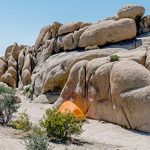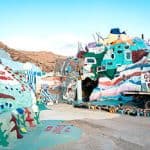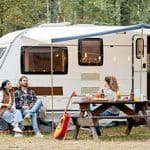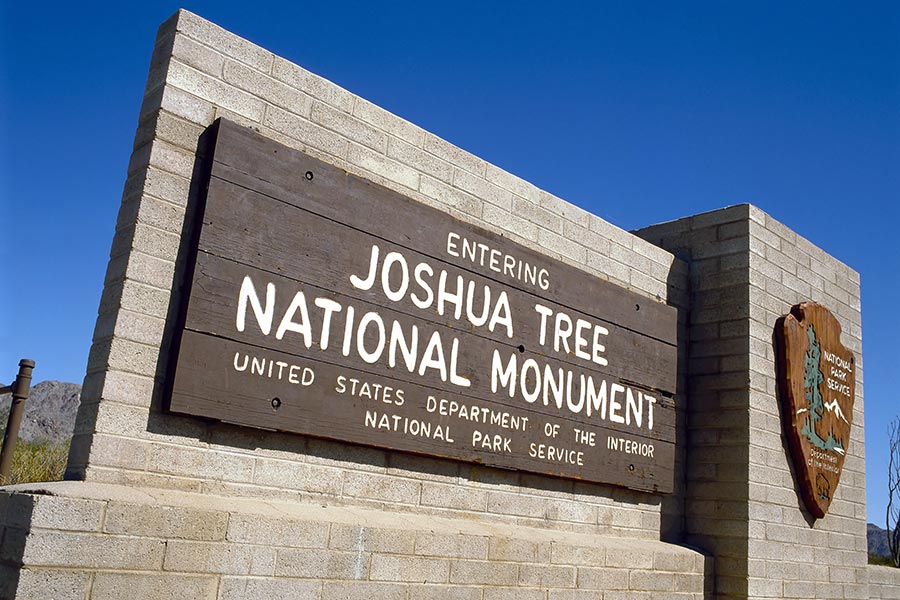
Of California’s nine national parks, Joshua Tree stands out as one of the most unique. With bubbling rock formations, resilient cactus, and the famous Joshua trees dotting the park, if outdoor enthusiasts have the chance to visit, they should take it. But should visitors be worried about encountering bears at Joshua Tree National Park?
California black bears have been seen in Joshua Tree National Park, but they are uncommon visitors to the park. Black bears do not live in Joshua Tree National Park, but they are occasional migrants to the area. For the most part, visitors don’t have to worry about running into any bears.
Even though bear sightings are not common, it is always a good idea to know what to watch out for when it comes to bears and visiting any national park. This post will help you have a safe and enjoyable time no matter what park you visit. To learn about the details of bears in Joshua Tree National Park, check out the following sections.
Black Bears in Joshua Tree National Park
Joshua Tree National Park is in Southern California near the border of Arizona. The park is home to a wide variety of plants and animals. Black bears have been seen in Joshua Tree National Park, but they are not regular visitors to the park.
Joshua Tree National Park is in the Colorado Desert, which is a subregion of the Sonoran Desert. Joshua Tree National Park is also in the Mojave Desert. These two deserts come together to create a unique ecosystem. However, this is not the best habitat for bears.
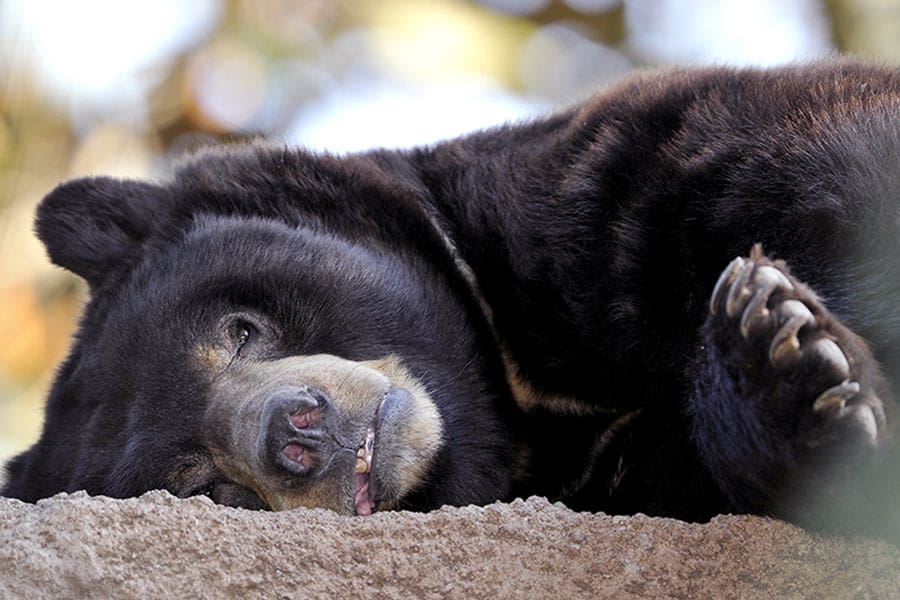
The Colorado Desert’s climate is hot and dry with little rainfall, which does not make for good bear habitat. On the other hand, the Mojave Desert has a higher elevation and cooler temperatures than the Colorado Desert. Still, it also has little rain, which means that even when these two deserts meet, this part of North America doesn’t have the best climate for bears.
The elevated temperatures and lack of water can be tough on black bears. They can range from 100 to over 400 pounds in weight, so they need a lot of food and water to survive. In addition, the Colorado Desert has very little vegetation, so finding food can be difficult for black bears. They may eat cactus fruit or other plants, but this is not their preferred diet.
The lack of water also means that black bears in Joshua Tree National Park cannot stay in the park year-round. Instead, black bears will migrate to other parts of California, where more food and water are available.
Since Joshua Tree National Park covers nearly 800,000 acres, some bears tend to wander into the outskirts of the park since neighboring forests are more suitable for bears. For example, the San Bernadino National Forest is home to the California Black bear. Therefore, visitors are more likely to see bears in this national forest than they are in Joshua Tree National Park.
Though visitors to Joshua Tree National Park are not likely to see grizzly or black bears, there is another kind of “bear” that is more common, the Teddy Bear Cholla. The Teddy Bear Cholla is a cactus that looks like a teddy bear. It is found throughout the Southwest United States and Mexico.
The Teddy Bear Cholla gets its name from its fuzzy appearance and because it is often mistaken for a cactus hugger, which is another name for a cholla. The Teddy Bear Cholla cactus has fine, white needles in groups that look like teddy bear ears.
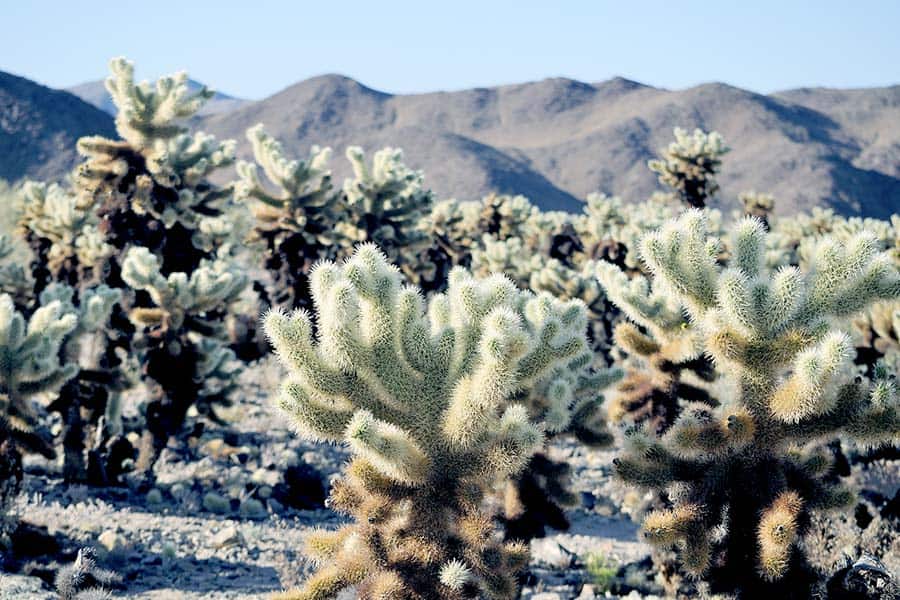
Though it might look fuzzy like a stuffed animal, don’t be fooled. This cactus has very sharp spines that can easily pierce your skin. If you are stung by a teddy bear cholla, it will hurt for quite some time.
There is a short hike called the Cholla Gardens, where Teddy Bear Chollas surround the trail. The Teddy Bear Chollas stand about eye level and surround the hikers. Luckily, the path has wooden railings to make sure hikers are safe and don’t accidentally hit one of the cacti. So if you are looking for a close-up view of these fuzzy-looking cacti, the Cholla Gardens is the place to go.
Van Camping Life Fun Fact: The Joshua “tree” is actually not a tree at all. It’s classified as a yucca, which is in the family of orchids and flowering grasses. But it got its name since it looks so much like a tree. It is said that these trees can grow to be 150 years old.
Other Posts of Interest
- Are There Bears On The Appalachian Trail?
- Winnebago Revel vs. Winnebago Boldt
- 14 Perfect Places To Van Camp In California
- What Is The Advantage Of A Rooftop Tent? (With Tent Choices)
Are There Grizzly Bears in Joshua Tree National Park?
There have been no confirmed sightings of grizzly bears in Joshua Tree National Park, and it is improbable that visitors will encounter one. Grizzly bears used to live in California, but they are not found there anymore. Grizzly bears tend to thrive in places that have cooler temperatures and more rainfall than the Colorado Desert or the Mojave Desert.
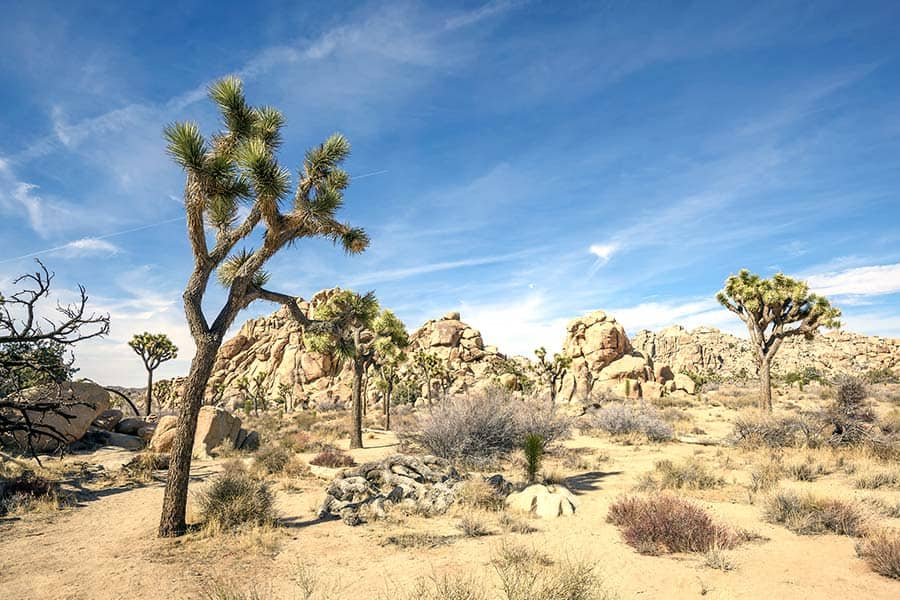
To be exact, Joshua Tree National Park covers 794,000 acres, and this means that it is possible to go into the park and not see a bear even if they are there. However, bears have been known to wander out of their usual habitats in search of food. So it is always essential to be aware of your surroundings when you are in the wilderness.
However, only black bears are seen in this park, and the rest of California since California Grizzly bears no longer exist in the wild.
Check out these five handy camping items:
- Biodegradable Liquid Soap
- Microfiber Towels
- 300W Power Inverter
- Battery Operated Fan
- Square Pie Iron
Do You Need a Bear Canister at Joshua Tree National Park?
While a bear canister isn’t essential, it is a good idea to bring one if you are camping in Joshua Tree National Park. A bear canister will protect your food from being stolen by bears and other animals.
There are many rodents that have been known to chew through food bags to get their next meal. Some of these rodents in Joshua Tree National Park include kangaroo rats, woodrats, and mice.
If you are backpacking in Joshua Tree National Park, you will need to have a hard-sided container to store your food. Though bear canisters are not required for hiking or backpacking, campers are encouraged to keep their food in hard containers or their vehicles.
Proper storage of your food will make sure you don’t accidentally feed the wildlife. Feeding the wildlife can be dangerous because it makes animals more aggressive and unpredictable toward humans.
If you are camping in Joshua Tree National Park, make sure to store your food and other attractants away from your campsite. Hang it in a tree or place them in a bear canister. This precaution will help prevent any kind of critters from getting into your food.
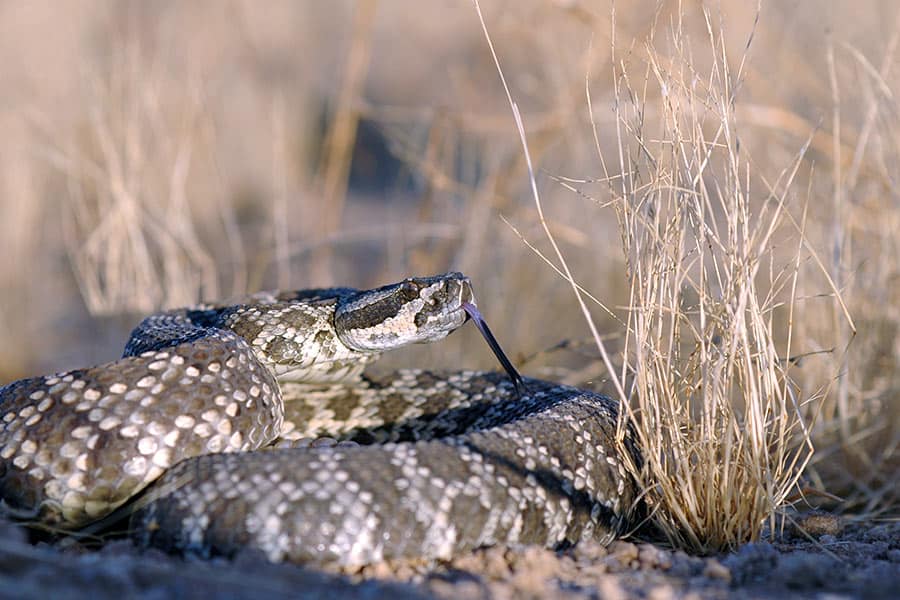
Though bears are a possibility, other dangers like heat, dehydration, rattlesnakes and other poisonous insects like black widows should be more concerning than the occasional, curious bear.
Has Anyone Been Attacked by a Bear in Joshua Tree National Park?
Though the occasional black bear has been seen in Joshua Tree National Park, there have been no confirmed bear attacks.
However, visitors should always be aware of their surroundings and take precautions when exploring the outdoors. Just because bears are uncommon doesn’t mean campers and hikers shouldn’t educate themselves about them.
If you happen to see a bear, do not approach it. Instead, stay calm and back away slowly. Make sure to keep an eye on the bear, so you know where it is at all times. If the bear starts to come towards you, make loud noises, make yourself look big, and try to scare it off. Do not run, as this may trigger a chase response from the bear.
Though it is not in Joshua Tree National Park, there was a confirmed, non-lethal bear attack in San Bernadino National Forest in 2009. The national forest is right next to Joshua Tree.
Luckily, the boy that was attacked recovered from his injuries. However, if you are spending time on the border of Joshua Tree National Park, you should be extra aware that there may be bears around.
San Bernadino National Forest is lusher than Joshua Tree National Park and has rivers that run through it. This is why bears live in places like the forest where there is more to eat and drink and only sometimes wander into places like Joshua Tree, where an attack by cactus is much more likely than a real bear.
A Relatively Bear-Free National Park
From the Joshua trees that thrive without much moisture to the variety of desert plants and wildlife, Joshua Tree National Park can seem like another planet. Yet, there is much to see on a trip to this unique, dry national park.
Those worried about bears will be relieved to hear that this park has the wrong climate for bears, so they tend to say away. The closest thing to a bear that most people will see on a Joshua Tree trip is the one on the California state flag.




